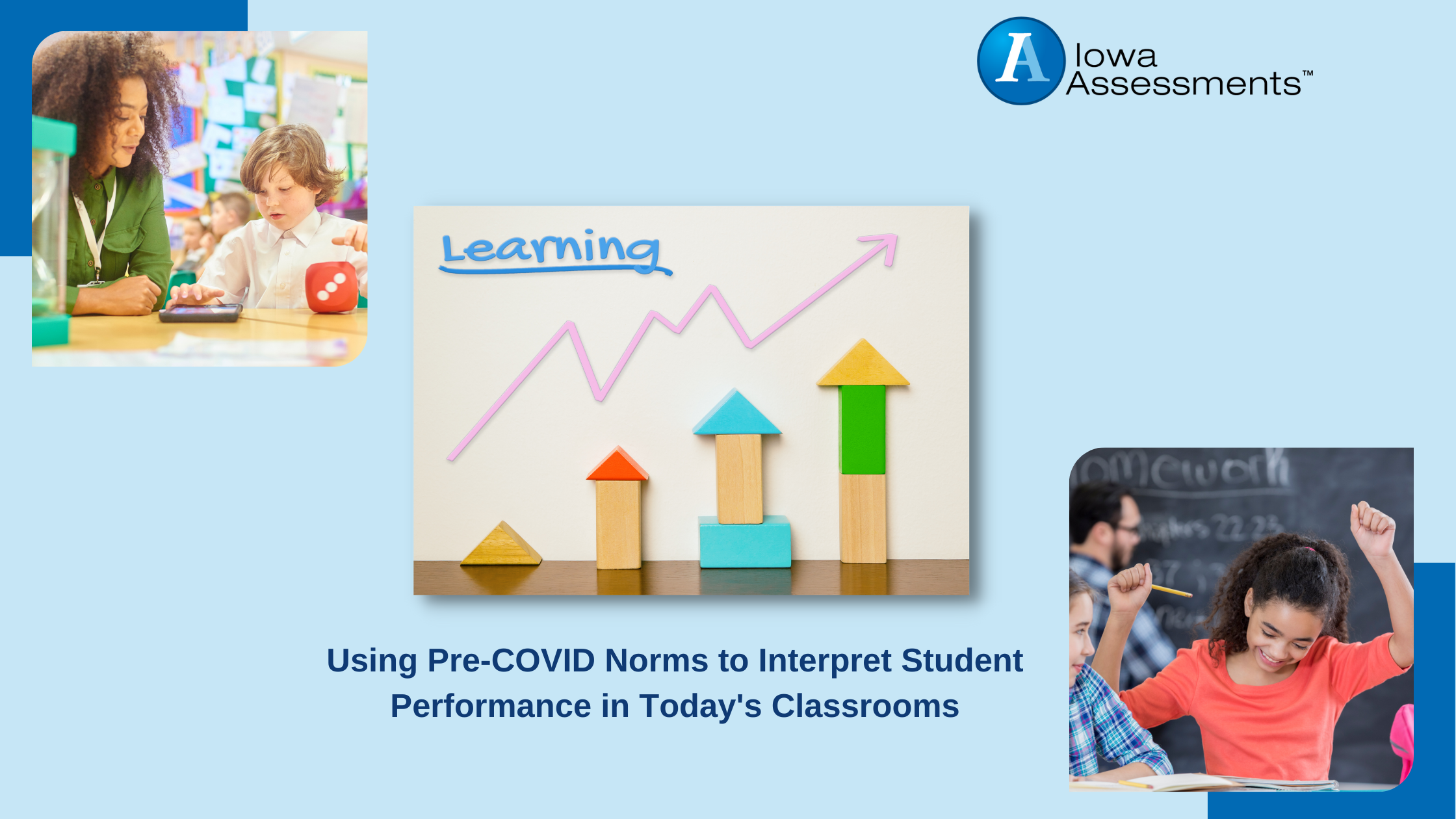
"Pre-COVID norms determine how student performance in 2023 compares to a benchmark established prior to the pandemic"
The lingering impact of the pandemic on K–12 student learning has been significant, leaving students months behind in mathematics and reading. Achievement gaps widened, with students from low-income families struggling the most.
Research shows that post-COVID achievement scores may be very different depending upon student population, school location and return-to-school policies. Another way to examine results is to look at individual student performance to identify changes since 2020.
Why Pre-COVID Norms?
Normative information is a critical measure of change, especially in times of turmoil and interruption.
Normative comparisons inform many education-related decisions and can provide a fixed benchmark for future performance. The Iowa Assessments provide a frame of reference for measuring both student growth and decline.
Is a Pre-COVID Reference Group Appropriate?
The appropriateness of the reference group is vital for making comparisons and interpretations.
Normative information for the Iowa Assessments is based on a nationally representative sample of students from public and private schools prior to the onset of COVID. The normative information from this sample of students provides a basis for interpreting student performance in 2023 and beyond.
Data collected prior to COVID allow the interpretation to be placed on a common scale, so that a score can be compared with scores over time.
Pre-COVID norms determine how student performance in 2023 compares to a fixed benchmark established prior to the pandemic.
How to Interpret the Results?
National percentile ranks (NPRs) allow the comparison of student performance year-over-year. Positive change in NPRs between years suggest that a student is performing better relative to the norm group. Declines in NPRs suggest that a student is performing relatively less well.
Figure 1 illustrates how student performance is expected to change between grades 3 and 5 in reading. These trajectories are based on growth as seen in pre-COVID classrooms. For example, a student in grade 3 with an NPR of 50, earns a scale score of 176. In grade 4, the student will earn a 192 to remain at the 50th NPR. In grade 5, the student will earn 205 to remain at the 50th NPR.
Figure 2 illustrates how these same trajectories can be used to better understand the impact of COVID for individual students. Assume two students (Student 1 and Student 2) were in third grade prior to COVID. Performance for Student 1 was just above an NPR of 75 prior to COVID and this student maintained similar NPRs in 2021 and 2022. Student 1 maintained the same positive growth that was consistent with pre-COVID norms.
Performance for Student 2 shows a decline in NPRs within this period of time. An NPR of 25 in grade 3 dropped to an NPR of 10 in grade 4. Student 2 showed a slight positive change in grade 5 but remained well below expected performance trajectories..png?width=2189&height=1102&name=Dr.%20Welch%20blogs%20-%20graphs%20(3).png)
What Questions Can I Answer Based on NPRs?
Having multiple sources of information is extremely important for interpreting student performance. NPRs from the Iowa Assessments can be used as a complement to other sources of information as an external verification of local decisions.
Some of the primary questions that can be addressed using an NPR are listed below. Calculating the difference in NPRs between years will allow you to classify students according to maintaining, growing, or sliding in their performance relative to their pre-COVID status.
- How did your students perform in 2023 as compared to pre-COVID?
- Is change in student performance (gain or decline) consistent across reading and mathematics?
- Do all groups of students show consistent gains and declines between pre-COVID and now?
- Did lower-performing students decline more in performance than higher-performing students?
Interpret Data From the Iowa Assessments





